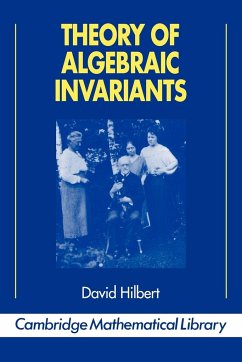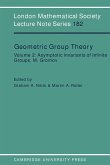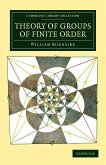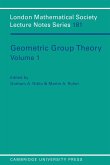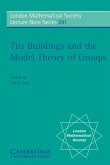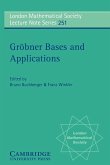In the summer semester of 1897 David Hilbert (1862-1943) gave an introductory course in Invariant Theory at the University of Gottingen. This book is an English translation of the handwritten notes taken from this course by Hilbert's student Sophus Marxen. The year 1897 was the perfect time for Hilbert to present such an introduction to invariant theory. His research in the subject had been completed. His famous finiteness theorem had been proved and published in two papers that changed the course of invariant theory dramatically and that laid the foundation for modern commutative algebra. Thus these lectures take into account both the old approach of his predecessors and his new ideas. This bridge from nineteenth- to twentieth-century mathematics makes these lecture notes a special and fascinating account of invariant theory. Hilbert's course was given at a level accessible to graduate students in mathematics, requiring only a familiarity with linear algebra and the basics of ring and group theory. The text will be useful as a self-contained introduction to invariant theory. But it will also be invaluable as a historical source for anyone interested in the foundations of twentieth-century mathematics.
Table of contents:
Part I. The Elements of Invariant Theory: 1. Forms; 2. Linear transformations; 3. The concept of invariants; 4. Properties of invariants and covariants; 5. The operation symbols D and D; 6. The smallest system of conditions for the determination of invariants and covariants; 7. The number of invariants of degree g; 8. The invariants and covariants of degree 2 and 3; 9. Simultaneous invariants and covariants; 10. Covariants of covariants; 11. The invariants and covariants as functions of the roots; 12. The invariants and covariants as functions of the one-sided derivatives; 13. The symbolic representation of invariants and covariants; Part II. The Theory of Invariant Fields: 14. Proof of the finitenesss of the full invariant system via representation by root differences; 15. A generalizable proof for the finiteness of the full invariant system; 16. The system of invariants I; I1, I2, Ik; 17. The vanishing of the invariants.
Table of contents:
Part I. The Elements of Invariant Theory: 1. Forms; 2. Linear transformations; 3. The concept of invariants; 4. Properties of invariants and covariants; 5. The operation symbols D and D; 6. The smallest system of conditions for the determination of invariants and covariants; 7. The number of invariants of degree g; 8. The invariants and covariants of degree 2 and 3; 9. Simultaneous invariants and covariants; 10. Covariants of covariants; 11. The invariants and covariants as functions of the roots; 12. The invariants and covariants as functions of the one-sided derivatives; 13. The symbolic representation of invariants and covariants; Part II. The Theory of Invariant Fields: 14. Proof of the finitenesss of the full invariant system via representation by root differences; 15. A generalizable proof for the finiteness of the full invariant system; 16. The system of invariants I; I1, I2, Ik; 17. The vanishing of the invariants.

